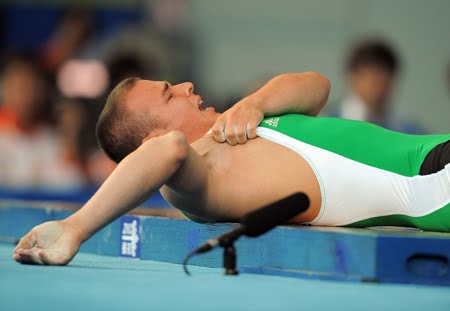A New Season….OF INJURIES Part 2: Helping Rotator cuff Strains
As mentioned in a previous post this week, I talked about how people returning to lifting sometimes get the odd rotator cuff irritation that makes them either limit their lifting or change their workouts to prevent further damage. This is different from a rotator cuff tear, in that if we were to do strength testing on the shoulder, they would pass, but would have some level of discomfort during the tests due to the inflammation and irritation. A tear would limit the strength and bring out positive tests on things like empty can tests, resisted internal and external movements, and active overhead raise.
Since the shoulder for people returning to the gym hasn’t been stressed that much in the month or weeks leading up tot heir return, odds are the joint is getting a little bit of de-training to it, and not firing as well as possible. By jumping right back into it, some trainees will get a bit of soreness and stiffness for the first few workouts. The downside is that by not addressing this, it can deactivate the muscles of the rotator cuff as they get slowly more and more damaged, limiting their ability to stabilize, and leading to an injury. I know, this is kind of a doomsday scenario, but it can happen.
One way to counteract this is to go through a series or two of scapular retraining movements to get the rotator cuff fired up and also make the shoulder blade move properly after spending the past few weeks with bad posture hunched over the computer, driving to the family home miles away, or sleeping in until…7.
A simple series I use before my own pressing workouts to keep my shoulder from reverting after getting a partial thickness tear in a bench press contest a few years back is shown on the video below.
http://www.youtube.com/v/OelNrGO-XT4?fs=1&hl=en_USThe first two work on scapular movement and lower trap strength, while the third one works on scapular stability through an active shoulder flexion and rotation. Most guys will keep the palm face down when pulling back, but what this tends to do is let the person “roll” their shoulder blade over the top and disengage their lower traps as they get fatigued. This feeds into the problem. By supinating the hand as I bring it down, I force external rotation of the shoulder, which also causes the lower traps to work harder and suck the scapula down against the ribs, and keeps it from rolling over the top and creating issues.
Next, keep all pressing movements below the level of the nipple. I know, I know, I said nipple, but grow up. By starting with flat press or incline press, there is a propensity to let the humerus glide up into the acromion process and cause some injuries, whereas doing decline pressing can help train the rotator cuff to pull the humerus down and into the glenoid fossa and get some roll instead of glide, keeping the shoulder happy. This rule also goes for overhead pressing, especially anything with an eccentric moment. By doing push-press or jerk-press movements,you can limit the eccentric moment which will put some additional demands on a weaker rotator cuff, and possibly lead to that evil bugger getting squished or at the very least worked harder than a competitive eater’s colon.
Also, working on pulling movements in a 2-to-1 ratio with pushing movements will help reduce the pressure on the rotator cuff during this initial phase, and can be reduced to a 1-to-1 ratio after about a month or two if needed, but I am a strong believer that pressing movements should never or even be equal to the number of pulling movements, and that an optimal arrangement should be closer to a 3 pulls to 2 presses ratio, regardless of whether you are a body builder, power lifter, or whatever you want to be.
So in closing, for all those recreational lifters, and even the serious ones coming back from an off-season, keep in mind that things get weaker when you’re not training, but they will quickly get stronger again. By causing microtrauma to an area, it will either get stronger or get weaker if the trauma is beyond the threshold of the tissues. Accumulating all that microtrauma will result in a macrotrauma, or possibly an injury that will require therapy or even worse time under the knife. Take care of your shoulders now, and they will still be around in a few decades to let you do the things you enjoy. Beat the holy hell out of them, and you’ll be stuck looking like this guy!!

